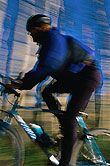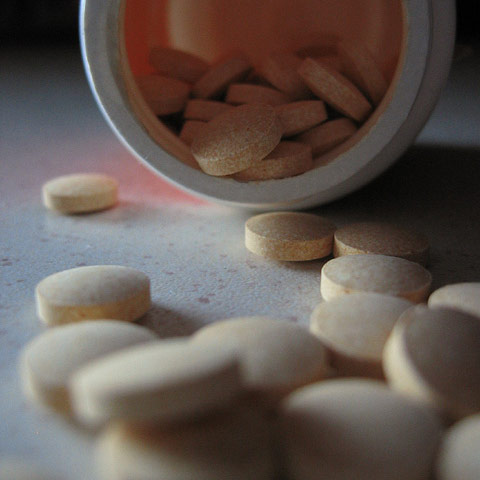
FRIDAY, March 25 (HealthDay News) — People looking for a cardiovascular workout that doesn’t stress or put weight on their joints sometimes turn to biking. Rather than a 30-minute jog or a quick pick-up game of basketball, they can spend hours on the bike, with little or no joint strain.
Though great for the joints, such extended periods of physical activity raise a new problem: How to keep the body properly fed and hydrated during long-distance rides.
Fitness experts and dietitians say that bicyclists who ride for two hours or more need to put a lot of thought into what their body will need during the outing. For starters, they need to eat and drink before, during and after the ride, said Todd Galati, an exercise physiologist and spokesman for the American Council on Exercise.
That’s not as easy as it sounds. “You can only get so many calories into your pre-ride meal and still feel comfortable on the bike,” Galati said. “And while you’re exercising, you can only take in so many calories and utilize them.”
About two hours before a ride, bicyclists should consume 17 to 20 ounces of liquid to prepare themselves for the sweating they’ll do during their ride, Galati said.
Amy Jamieson-Petonic, a registered dietitian and director of wellness coaching for the Cleveland Clinic, said that people planning on a long ride probably should get that liquid in the form of a sports drink or watered-down fruit juice. Either, she said, will contain extra carbohydrates to help feed their muscles while working.
Riders also should focus on eating some sort of healthy carbohydrate-rich snack before riding, said Jamieson-Petonic, a spokeswoman for the American Dietetic Association.
“If you’re eating within an hour of your ride, you should eat something light that amounts to about 60 grams of carbohydrates, like a banana,” she said. “As you back up from the start of your ride, you can eat more. For example, two hours before the ride you could eat a banana and a couple of pieces of toast.”
Long-distance bicyclists should pack food and liquid with them on any ride expected to go longer than an hour, Galati and Jamieson-Petonic said.
Riders should drink about 20 ounces of water for every hour they’re on the road, downing a quarter of a 20-ounce bottle every 15 minutes. That’s a minimum standard. “The hotter it is, the more you’ll sweat and the more you’ll need to replenish,” Galati said.
He recommends a sports drink over water if the ride will last longer than an hour because the carbohydrates such drinks contain are rapidly absorbed by the body and made available to the muscles because they are in liquid form. A drink that provides 30 to 60 grams of carbohydrates for each hour of training is ideal, he said.
Eventually, bicycle riders need to eat real food, however, as the exertion makes them hungry. But that’s a double-edged sword: Food will make a cyclist feel more full, but it will not absorb into the body as quickly.
“The liquid can be absorbed very quickly, but when you add the food, you’re going to slow down the absorption,” Galati said.
A mid-ride snack should have lots of carbohydrates and a little protein, Jamieson-Petonic said. She prefers fresh fruit, but admits it’s tough to store. Dried fruit and trail mix are good alternatives, as are low-sugar energy bars and gels.
Keeping the body fed with carbohydrates is important for the mind as well as the muscles, she said.
“Your brain only wants glucose or carbohydrates for energy. It doesn’t want protein. It doesn’t want fat,” she said, adding that the body needs more. “You need to be able to be coordinated. You need to make quick decisions and be able to stop and start. A lot of people don’t think about the effect on cognitive function.”
After the ride, it is important to eat and drink as soon as possible to replenish what’s been lost and give the body the materials it needs to recover.
Jamieson-Petonic recommends that people weigh themselves before and after a ride and then drink 20 to 24 ounces of fluid for every pound of weight they’ve lost during the ride.
It’s also important that a bicyclist consume some carbohydrates within the first half-hour after their ride. “That’s when your muscles are most readily able to replenish their glycogen stores,” she said. “They are more readily able to take in those carbohydrates as efficiently as possible.” Some options include a bagel, a banana, pretzels or chocolate milk, which has another benefit, as well.
“You need to get some lean protein into your body because that protein will help you repair the muscle fibers that have been torn during exercise,” Jamieson-Petonic said. She recommends eating about two ounces of protein, the equivalent of two low-fat mozzarella string cheese sticks or two ounces of chicken.
More information
The U.S. Department of Health and Human Services has more about healthy activity for adults.

